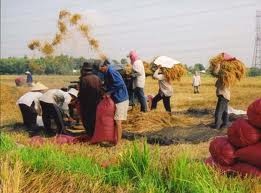A government resolution to achieve fast and sustainable poverty reduction in 62 poor districts (Resolution 30a) has been in effect for 3 years. Today’s Current Affairs looks at how the resolution works.
 |
Resolution 30a, an important government decision issued in December 2008, was meant to help 62 districts escape poverty that afflicts half their population. The resolution has involved the entire political hierarchy, business community and the public. Since 2008, hundreds of millions of USD, including more than 450 million USD from the state budget has been mobilized to boost the poorest areas of Vietnam. As a result, the number of poor households has fallen 5% a year and the average per capita income has increased 150% and 97% of makeshift houses in those areas have been replaced. Though austerity measures are in place to stabilize the national economy and curb inflation, resources for poor districts, subject to Resolution 30a, remain unreduced. This year, the government allocated more than 150 million USD to poor district, doubling last year’s figure. Furthermore, a wide range of programs have been launched, such as Fund for the Poor, insurance subsidies for poor farmers, and appointing well-educated young people as Vice Chairmen of poor communes.
But analysts warn that poverty reduction in Vietnam while fast, is unstable. 10% of families who escape poverty become poor again. There is a lack of uniform coordination between local agencies, and local administrations still rely on state assistance. Cao Khoa, Chairman of the Quang Ngai provincial People’s Committee suggests a way to achieve the set targets:"The government needs to assist the people in production and education. It should increase its investment in educational and vocational institutions and boost exports so as to realize the goal of fast and sustainable poverty reduction."
Deputy Prime Minister Vu Van Ninh urges patience in poverty reduction efforts as a long-term roadmap is required to root out poverty. He has asked local administrations devise plans on hunger eradication and poverty alleviation:"Fast and sustainable poverty reduction should be a key task of party committees and administrations at all levels. Annual plans should include these targets and what have been done or not done should be reviewed."
Before the issuance of Resolution 30a, Vietnam carried out programs such as 134-135 on socio-economic development in the most disadvantaged and remote communes and areas inhabited by ethnic minority people. A party resolution on agriculture, rural areas and farmers and a sustainable poverty reduction orientation until 2020 were recently released .
Minister of Labor, Invalids and Social Affairs Nguyen Thi Hai Chuyen says her ministry is re-classifying poor households based on the Consumer Price Index (CPI), which reflects real poverty reduction results:" We aim to reduce the percentage of poor households to below 35% by 2015 in accordance with Resolution 30a. Communities should be provided with training courses to make full use of existing essential infrastructure projects. They will be assisted in accessing production and market services. The percentage of educated rural laborers will reach 40%, and investment will be made in socio-economic infrastructure in poor districts."
It is hoped that experiences learnt from the 3 year implementation of Resolution 30a will help the government come up with better programs for achieving poverty reduction.
Anh Huyen